160 books about New York (N.Y.) and 5
start with W
160 books about New York (N.Y.) and 5
160 books about New York (N.Y.)
5 start with W start with W
5 start with W start with W
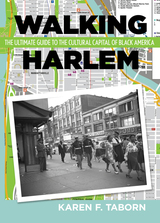
Walking Harlem
The Ultimate Guide to the Cultural Capital of Black America
Taborn, Karen
Rutgers University Press, 2018
With its rich cultural history and many landmark buildings, Harlem is not just one of New York’s most distinctive neighborhoods; it’s also one of the most walkable.
This illustrated guide takes readers on five separate walking tours of Harlem, covering ninety-one different historical sites. Alongside major tourist destinations like the Apollo Theater and the Abyssinian Baptist Church, longtime Harlem resident Karen Taborn includes little-known local secrets like Jazz Age speakeasies, literati, political and arts community locales. Drawing from rare historical archives, she also provides plenty of interesting background information on each location.
This guide was designed with the needs of walkers in mind. Each tour consists of eight to twenty-nine nearby sites, and at the start of each section, readers will find detailed maps of the tour sites, as well as an estimated time for each walk. In case individuals would like to take a more leisurely tour, it provides recommendations for restaurants and cafes where they can stop along the way.
Walking Harlem gives readers all the tools they need to thoroughly explore over a century’s worth of this vital neighborhood’s cultural, political, religious, and artistic heritage. With its informative text and nearly seventy stunning photographs, this is the most comprehensive, engaging, and educational walking tour guidebook on one of New York’s historic neighborhoods.
This illustrated guide takes readers on five separate walking tours of Harlem, covering ninety-one different historical sites. Alongside major tourist destinations like the Apollo Theater and the Abyssinian Baptist Church, longtime Harlem resident Karen Taborn includes little-known local secrets like Jazz Age speakeasies, literati, political and arts community locales. Drawing from rare historical archives, she also provides plenty of interesting background information on each location.
This guide was designed with the needs of walkers in mind. Each tour consists of eight to twenty-nine nearby sites, and at the start of each section, readers will find detailed maps of the tour sites, as well as an estimated time for each walk. In case individuals would like to take a more leisurely tour, it provides recommendations for restaurants and cafes where they can stop along the way.
Walking Harlem gives readers all the tools they need to thoroughly explore over a century’s worth of this vital neighborhood’s cultural, political, religious, and artistic heritage. With its informative text and nearly seventy stunning photographs, this is the most comprehensive, engaging, and educational walking tour guidebook on one of New York’s historic neighborhoods.
[more]
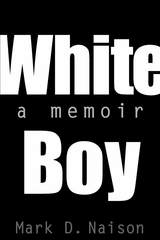
White Boy
A Memoir
Mark D. Naison
Temple University Press, 2002
How does a Jewish boy who spent the bulk of his childhood on the basketball courts of Brooklyn wind up teaching in one of the city's pioneering black studies departments? Naison's odyssey begins as Brooklyn public schools respond to a new wave of Black migrants and Caribbean immigrants, and established residents flee to virtually all-white parts of the city or suburbs. Already alienated by his parents' stance on race issues and their ambitions for him, he has started on a separate ideological path by the time he enters Columbia College. Once he embarks on a long-term interracial relationship, becomes a member of SDS, focuses his historical work on black activists, and organizes community groups in the Bronx, his immersion in the radical politics of the 1960s has emerged as the center of his life. Determined to keep his ties to the Black community, even when the New Left splits along racial lines, Naison joined the fledgling African American studies program at Fordham, remarkable then as now for its commitment to interracial education.This memoir offers more than a participant's account of the New Left's racial dynamics; it eloquently speaks to the ways in which political commitments emerge from and are infused with the personal choices we all make.
[more]
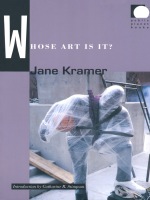
Whose Art Is It?
Jane Kramer
Duke University Press, 1994
Whose Art Is It? is the story of sculptor John Ahearn, a white artist in a black and Hispanic neighborhood of the South Bronx, and of the people he cast for a series of public sculptures commissioned for an intersection outside a police station. Jane Kramer, telling this story, raises one of the most urgent questions of our time: How do we live in a society we share with people who are, often by their own definitions, "different?" Ahearn’s subjects were "not the best of the neighborhood." They were a junkie, a hustler, and a street kid. Their images sparked a controversy throughout the community—and New York itself—over issues of white representations of people of color and the appropriateness of particular images as civic art. The sculptures, cast in bronze and painted, were up for only five days before Ahearn removed them.
This compelling narrative raises questions about community and public art policies, about stereotypes and multiculturalism. With wit, drama, sympathy, and circumspection, Kramer draws the reader into the multicultural debate, challenging our assumptions about art, image, and their relation to community. Her portrait of the South Bronx takes the argument to its grass roots—provocative, surprising in its contradictions and complexities and not at all easy to resolve.
Accompanied by an introduction by Catharine R. Stimpson exploring the issues of artistic freedom, "political correctness," and multiculturalism, Whose Art Is It? is a lively and accessible introduction to the ongoing debate on representation and private expression in the public sphere.
This compelling narrative raises questions about community and public art policies, about stereotypes and multiculturalism. With wit, drama, sympathy, and circumspection, Kramer draws the reader into the multicultural debate, challenging our assumptions about art, image, and their relation to community. Her portrait of the South Bronx takes the argument to its grass roots—provocative, surprising in its contradictions and complexities and not at all easy to resolve.
Accompanied by an introduction by Catharine R. Stimpson exploring the issues of artistic freedom, "political correctness," and multiculturalism, Whose Art Is It? is a lively and accessible introduction to the ongoing debate on representation and private expression in the public sphere.
[more]
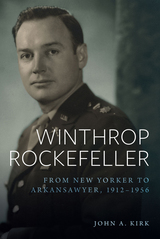
Winthrop Rockefeller
From New Yorker to Arkansawyer, 1912-1956
John A. Kirk
University of Arkansas Press, 2022
Why did Winthrop Rockefeller, scion of one of the most powerful families in American history, leave New York for an Arkansas mountaintop in the 1950s? In this richly detailed biography of the former Arkansas governor, John A. Kirk delves into the historical record to fully unravel that mystery for the first time. Kirk pursues clues threaded throughout Rockefeller’s life, tracing his family background, childhood, and education; his rise in the oil industry from roustabout to junior executive; his military service in the Pacific during World War II, including his involvement in the battles of Guam, Leyte, and Okinawa; his postwar work in race relations, health, education, and philanthropy; his marriage to and divorce from Barbara “Bobo” Sears; and the birth of his only child, future Arkansas lieutenant governor Win Paul Rockefeller. This careful examination of Winthrop Rockefeller’s first forty-four years casts a powerful new light on his relationship with his adopted state, where his legacy continues to be felt more than half a century after his governorship.
[more]
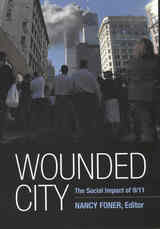
Wounded City
The Social Impact of 9/11 on New York City
Nancy Foner
Russell Sage Foundation, 2005
New York has eight million deeply personal and unique stories of pain and perseverance from September 11, 2001. But the toll of tragedy is greater than the anguish it inflicts on individuals—communities suffer as well. In Wounded City, editor Nancy Foner brings together an accomplished group of scholars to document how a broad range of communities—residential, occupational, ethnic, and civic—were affected and changed by the World Trade Center attacks. Using survey data and in-depth ethnographies, the book offers sophisticated analysis and gives voice to the human experiences behind the summary statistics, revealing how the nature of these communities shaped their response to the disaster. Sociologists Philip Kasinitz, Gregory Smithsimon, and Binh Pok highlight the importance of physical space in the recovery process by comparing life after 9/11 in two neighborhoods close to ground zero—Tribeca, which is nestled close to the city's downtown, and Battery Park City, which is geographically and structurally separated from other sections of the city. Melanie Hildebrandt looks at how social solidarity changed in a predominantly Irish, middle class community that was struck twice with tragedy: the loss of many residents on 9/11 and a deadly plane crash two months later. Jennifer Bryan shows that in the face of hostility and hate crimes, many Arab Muslims in Jersey City stressed their adherence to traditional Islam. Contributor Karen Seeley interviews psychotherapists who faced the challenge of trying to help patients deal with a tragedy that they themselves were profoundly affected by. Economist Daniel Beunza and sociologist David Stark paint a picture of organizational resilience as they detail how securities traders weathered successive crises after evacuating their downtown office and moving temporarily to New Jersey. Francesca Polletta and Lesley Wood look at a hopeful side of a horrible tragedy: civic involvement in town meetings and public deliberations to discuss what should be done to rebuild at ground zero and help New Yorkers create a better future in the footprints of disaster. New Yorkers suffered tremendous losses on September 11, 2001: thousands of lives, billions of dollars, the symbols of their skyline, and their peace of mind. But not lost in the rubble of the World Trade Center were the residential, ethnic, occupational, and organizational communities that make up New York's rich mosaic. Wounded City gives voice to some of those communities, showing how they dealt with unforeseen circumstances that created or deepened divisions, yet at the same brought them together in suffering and hope. It is a unique look at the aftermath of a devastating day and the vitality of a diverse city. A Russell Sage Foundation September 11 Initiative Volume
[more]
READERS
Browse our collection.
PUBLISHERS
See BiblioVault's publisher services.
STUDENT SERVICES
Files for college accessibility offices.
UChicago Accessibility Resources
home | accessibility | search | about | contact us
BiblioVault ® 2001 - 2024
The University of Chicago Press









